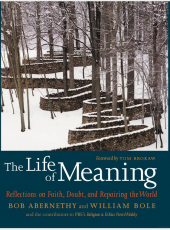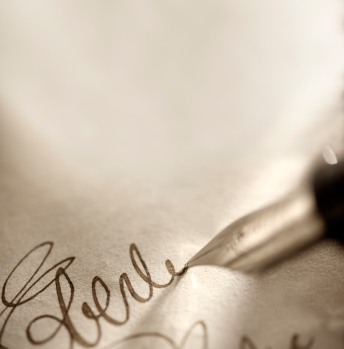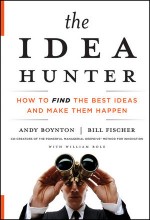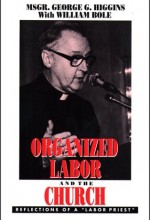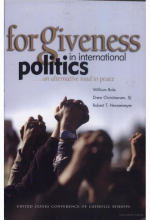Finding New Solace in Bruce Springsteen’s ‘The Rising’ 20 years after 9/11
In the late afternoon of Sept. 11, 2001, Bruce Springsteen headed out to a coastal bridge near his home in New Jersey, where, on a clear day in the past, he could see the vertical lines of the Twin Towers. On this cataclysmic day, following the atrocities that appeared on his television screen that morning, he saw only “torrents of smoke lifted from the end of Manhattan Island,” as he recalled in his 2016 memoir Born to Run.
After sitting alone with his restless thoughts on a beach below the foot of the bridge, Springsteen started back to the parking lot. At that moment, a man drove by, with his window open, and yelled out — “Bruce, we need you.”
The week after, Springsteen headlined a national telethon to raise money for the grieving families who lost loved ones when the towers fell on 9/11, and was inspired to begin recording his 12th studio album, “The Rising.” With this 9/11-themed album, released in July 2002, the Boss was back: He was once again at the top of the charts, the band was rocking like it hadn’t since the 1980s, and the music was mournful and uplifting at the same time. The driver who called upon Springsteen at the beach, and seemingly every other fan, got the Bruce they needed.
I have to confess that I wasn’t looking for this Bruce, during the long aftershocks of 9/11.
Read my confession and why I believe we still need Bruce, 20 years later. See the full article.
What’s on Your Pandemic Playlist?
If you happened to be inside a hospital early in the pandemic, you might have heard these words floating through the corridors — “The smiles returning to the faces. Little darling, it seems like years since it’s been here.” They’re lyrics from “Here Comes the Sun,” George Harrison’s 1969 classic about resurrection from the dead of winter. Across the country, hospitals played the Beatles’ song over paging systems as a celebratory ritual when discharging a patient on the mend from the coronavirus. Many still do.
Music has been therapeutic for people outside hospitals, too, and more than a few of the prescribed tunes were written and sung by the “quiet Beatle,” also known as the spiritual one. Harrison, who died of lung cancer in 2001, continues to pop up on pandemic playlists during a dark winter that indeed “seems like years.” Among his most turned-to works are not only “Here Comes the Sun” but also other creations, including multiple tracks from his signature solo album, “All Things Must Pass.”
See the article about George Harrison’s coronavirus comeback, in NCR …
Prince’s ‘Welcome 2 America’ Puts Faith and Politics Front and Center
A little over five years ago, the funk-rock icon Prince died, at the age of 57, from an accidental overdose of fentanyl. Much of the music he had been putting out was uneventful, though tickets to his concerts were prized (especially after an unforgettable 2007 Super Bowl halftime show, where he serendipitously performed “Purple Rain” amid a relentless downpour). His studio albums had been uneven for quite some time — which makes the latest posthumous release from Prince’s estate all the more stunning.
“Welcome 2 America,” released on July 30, is the first posthumous album by Prince made up entirely of unreleased material. The 12-song set was retrieved from the singer’s prodigious (and literal) vault of never-released music. Recorded in 2010, the album delivers some of Prince’s catchiest music in decades, while exploring big questions. It is an invigorating fusion of multiple genres, but also of two realms that Prince was not particularly known for mixing — faith and politics.
Read my review of “Welcome 2 America,” and why this album, though a decade old, is right on time.
Give Up My White Privileges? Sure. Which Ones?
Shortly after the resurgence of Black Lives Matter, I found myself connecting with friends and acquaintances who seemed prepared to admit that we’ve enjoyed privileges interlinked with race (and age), and that right about now would be a good time to start unhanding these privileges. For the most part, they’re people like me—white baby boomers, with a skew toward males who attended Catholic schools long ago. The feelings among them are genuine and might well reflect a moment of realization for many Americans, not just white liberals but also others.
Still, there are questions. What privileges are we talking about? And what exactly is it that we’d be giving up?
My friends and interlocutors are speaking of the now-familiar advantages. These include an assurance that I could approach authorities, including the police, and expect a fair hearing; that I could browse aimlessly in shops without clerks monitoring my every movement; that if I move to a new locale, the neighbors won’t eye me with suspicion; and many other privileges of membership in my race.
These are surely advantages (they’re also the more visible ones, catchable on video). But what would it mean for me to no longer have them? Recalcitrant cops aren’t going to start manhandling me just because they’ve decided to go easy on Blacks. My new neighbors wouldn’t look at me warily, by virtue of having lowered their guard against Black newcomers. Shopkeepers won’t start tailing me after they’ve turned their gaze off patrons of color.
In other words, I can lose all of these privileges, at no cost to myself. They’re easy to renounce (if not necessarily change at the social level). Could the same be said for some other advantages, harder to see and therefore acknowledge? I’m thinking mainly of the pecuniary benefits made possible by systemic racism, or what the Latin American liberation theologians call “structures of sin.” Here’s one little corner of a structure: how my whiteness affects my property taxes. It’s something I scarcely thought about until seeing a Washington Post article under the headline, “Black families pay significantly higher property taxes than white families, new analysis shows.”
The Song of Mary
The setting is Nazareth, in ancient Palestine. A devout Jew, Mary is a rural peasant — “young, female, a member of a people subjected to economic exploitation by powerful ruling groups,” renowned Catholic theologian Elizabeth A. Johnson writes in her book about Mary, Truly Our Sister. Like other Jewish girls of her class, she’s most likely illiterate, though she knows the Hebrew Scriptures from oral tradition. Those girls were typically married off at around 13 years old, bearing children soon enough, and there’s no reason to believe Mary was any different. In the New Testament’s Gospel of Luke, she suddenly finds herself pregnant, and Joseph, the carpenter with whom she’s betrothed in an arranged marriage, knows he’s not the father.
Appraisals
How the CIA Tricked the World’s Best Writers (Wasn’t Even Hard)
A foreign power stealthily intervenes in another nation’s affairs, manipulating media and disseminating propaganda to help sway an election. Joel Whitney has spent years looking into underhanded activity of that sort, but his subject is not Vladimir Putin’s Russia and its incursions into election processes in the United States and Europe. Whitney points the flashlight at the U.S. government in his book Finks: How the CIA Tricked the World’s Best Writers.
Whitney writes how the Central Intelligence Agency covertly spawned a worldwide network of media outlets, especially literary magazines, during the Cold War. The CIA used these outlets to further its geopolitical goals—an exercise in cultural diplomacy, or “soft power” in today’s lingo, as distinct from the agency’s hard power that included assassinations, coups, election-related bribery, and other intrusions. The general outlines of this story have been known for decades, but Whitney is clearly hoping to amp up the indignation over what he considers an historic disgrace. In particular the “literary CIA,” as he styles it, blurred the lines “between criticism, journalism, and the needs of the state; between aesthetics and the political requirements of the Cold War.”
Servitude and Salvation in the Heartland
Through the centuries they have been known as “cretins,” “simpletons,” “morons,” “idiots,” “imbeciles” and “feebleminded,” among other classifications. These labels at various times have enjoyed the status of proper names, among them the Massachusetts School for Idiotic Children and Youth (a progressive organization founded in the mid-19th century) and the Virginia Colony for Epileptics and Feebleminded (which followed in the early 20th century).
Dan Barry’s disturbing yet beautifully told story begins in the mid-1960s, when a few dozen men transported from Abilene, Texas, are called “mentally retarded.”
The Irish and Italians: A Love-Hate Story (Or a Hate Story that Became a Love Story)
Growing up in Brooklyn, I belonged to a predominantly Sicilian parish headed by a priest with silvery hair and wooly white eyebrows, whose surname was Riley. The pastor’s homilies often involved itemizations of parish expenses, and some say that on one occasion he held up a few fronds of the kind distributed freely on Palm Sunday and declared, “Do you think these grow on trees?” When he was not preaching about money, the Irish priest was, more subtly, admonishing the Italians.
Communiques
Black Bodies Matter
During an eventful appearance at Boston College a while back, Ta-Nehisi Coates told the story of why he wrote the bestseller Between the World and Me. It is a slim volume—a meditation on what it means to be Black in America, framed as a letter to Coates’s 15-year-old son, Samori. Throughout the long evening, his tone was passionate but conversational, with not a whiff of preachiness. “The kind of oppression that black people feel in this country is very, very physical. It’s about people taking possession of your body.”
True to the Story It Needs to Tell
“Selma” the movie made a splash when it first appeared on the big screen, causing ripples of controversy—much of it centering on portrayals of head butting between Martin Luther King and President Lyndon Baines Johnson. So, I was a little surprised when I finally saw the movie, on an MLK Day weekend. As I quickly learned, “Selma” is not essentially about MLK or LBJ. It is, of all things, about Selma.
“All You Have is Your Imagination and Your Feeling”
On an early spring day, students had filled a classroom at Boston College and were settling into light chatter when, a little after noon, English professor Elizabeth Graver came briskly into the room, accompanied by a svelte woman dressed in black and wearing a deep-red head wrap. Graver told the class that her guest—British novelist, essayist, and short story writer Zadie Smith—had just arrived from New York, where she is on the faculty of the creative writing program at New York University. Graver added unceremoniously, “Take it away, guys.”
Why Your Neighborhood is Still Segregated
Residential segregation by law ended gradually in America, notably with the 1968 Fair Housing Act; it took Congress another two decades to build enforcement mechanisms into the statute. But Richard Rothstein makes a sobering case that the damage was done—permanently. Today, Black families have barely one-tenth the wealth of their white counterparts. Rothstein says the vast divide is “entirely attributable to unconstitutional federal housing policy practiced in the mid-20th century.”
